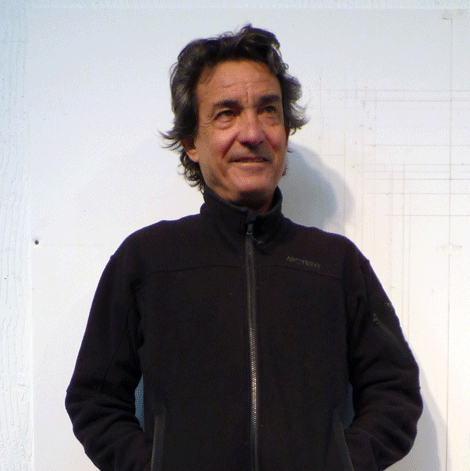Francesco X. Siqueiros is an artist/printmaker, founder of El Nopal Press, publishing fine-art limited-edition prints since 1990 in downtown Los Angeles. The focus of El Nopal Press is to underscore the heterogeneous nature of culture and to acknowledge its borders and the complex nature of that negotiation.
ARTILLERY: Given it’s your 25th anniversary—can you tell me a little about the history of El Nopal Press and how you came to envision it?
FRANCESCO X. SIQUEIROS: As a kind of unexpected offshoot of participating in Aquí y Allá in the late ’80s, early ’90s, El Nopal Press became a place where I imagined setting up a conversation about questions of the internationalization of art (beginning on the border of California and Mexico), and therefore going beyond the market and more local, vernacular issues. It evolved organically without a heavily predetermined path.
Looking back, could you sum up the best thing that happened for you at El Nopal and the worst thing that happened.
The best thing was being in that conversation with artists and then in the dance of printmaking itself—a repetitive activity and a set of challenges that I enjoy. The worst thing that happened was when the paradigm shifted and I felt like I couldn’t play all the roles that belonged to me: either artist or printer or curator—not and.
With the advent of digital imagery a lot has changed in the rationale that historically guided the creation of fine-art prints. How do you see the role of that now?
I integrate digital advances in the work of the press. Printing has always been about evolution and technical advances. For instance, I have been working with continuous tone film-printing recently. I don’t think there is a problem so long as digital doesn’t entirely replace printing processes with their physical properties.
How does the pricing of a print work, since this medium generates multiples; and since there are multiples, does that make prints less collectible?
Actually prints are limited editions, which I do in small runs anyway, and so they tend to retain their value. Paradoxically, as print shops and presses vanish, what I do becomes a rarity, which in the arts is worth more.
Who have been the favorite artists you have worked with at El Nopal?
All the projects that challenge me to solve problems, technical or in the content, are my favorites. Once I had to print a Harry Gamboa image of his daughter on fire and get it just right in a 115°F LA summer. Not easy. Then there were other favorite projects like: Anita Bunn, John Baldessari and a Paris exchange project that was particularly complicated. Anything that pushes the art and me is what I look for.


